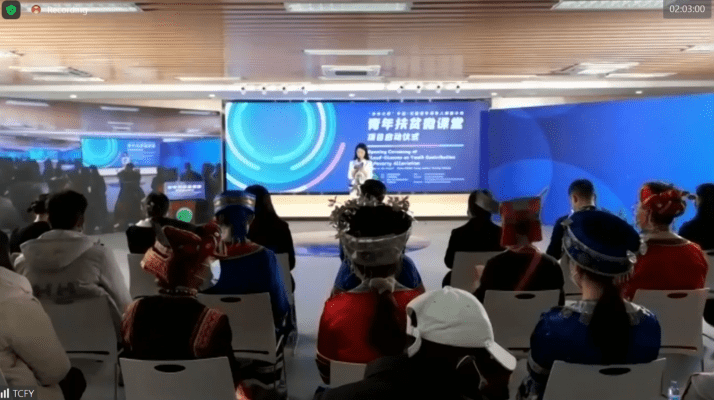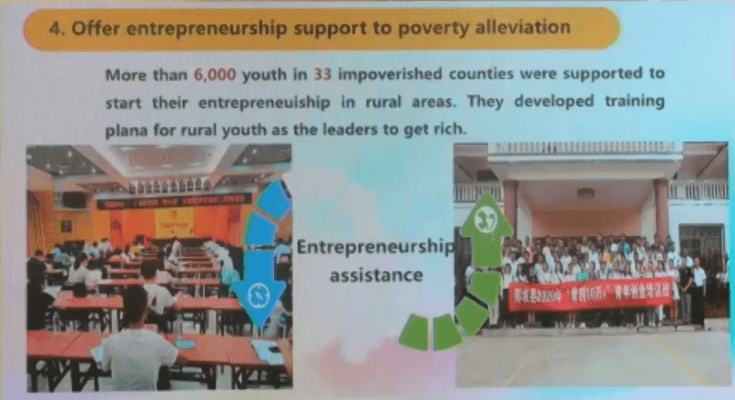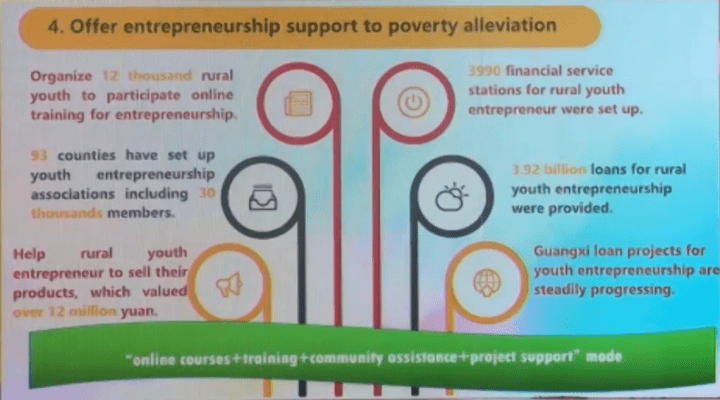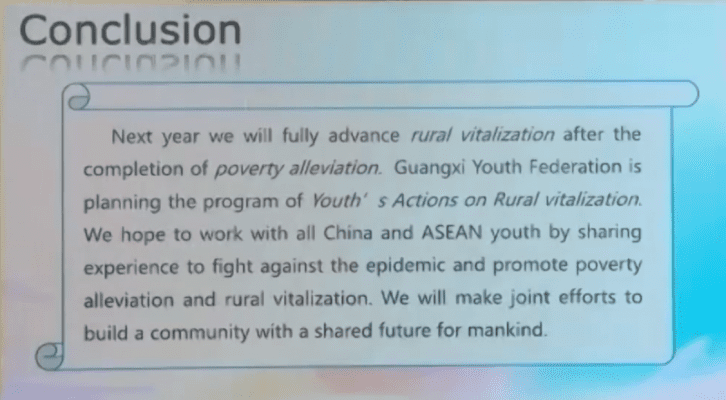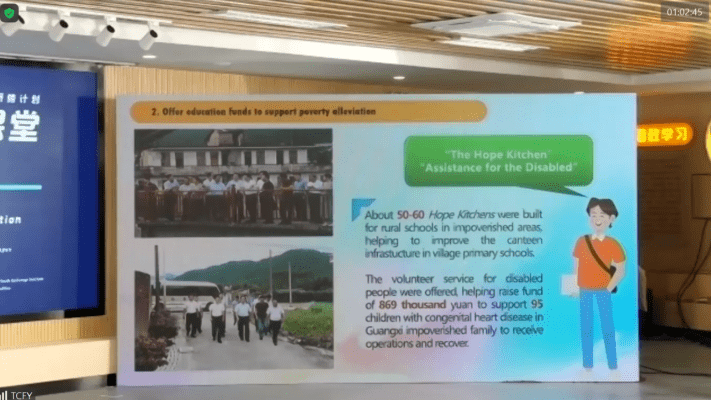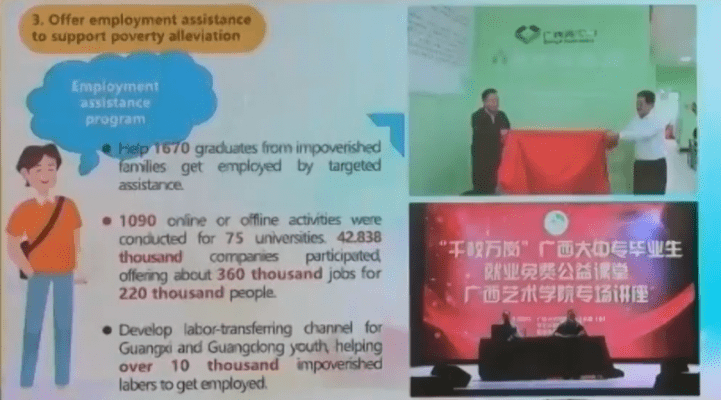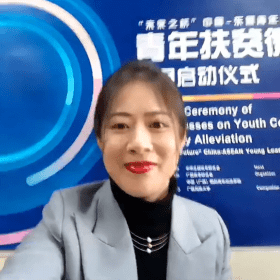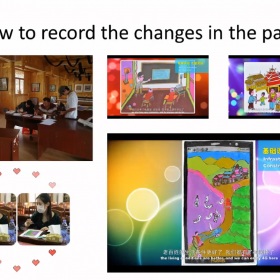Guangxi Commences Poverty Alleviation Program with ASEAN Youth Leaders
China recorded nearly 100 million rural poor people have been lifted out of poverty this year, and the poverty reduction goals of the United Nations 2030 Agenda for Sustainable Development have been achieved 10 years ahead of schedule, creating a great miracle in the history of human poverty reduction. On the road of the whole society participating in poverty alleviation, Chinese youth and youth organizations have participated in social practice in various ways, demonstrating the unique leading and innovative power of young people.
31st Dec 2020, the All-China Youth Federation and Guangxi Youth Federation, together with China (Guangxi) International Youth Exchange Institute have organised an opening ceremony, that used the form of online and offline to hold the “Cloud-Classes on Youth Contribution in Poverty Alleviation” program, which aimed to tell the story of youth poverty alleviation. There were more than hundreds of participants from the Guangxi and ASEAN countries young leaders joined the program. Also represented were Chinese poverty alleviation micro-courses lecturers, short video creators, and representatives of teachers from China (Guangxi) International Youth Exchange Institute.
The program aimed to explain China’s targeted poverty alleviation policies and introduce China’s targeted poverty alleviation policies to ASEAN youth organizations and youth through the showing of short English videos and sharing on poverty alleviation series. The experienced of the youth organizations in their poverty alleviation were shared, stories of youth alleviating poverty were presented, and showcased China’s poverty alleviation achievements in the eyes of ASEAN young representatives online.
Before the opening ceremony, Mr. Wuwei, Deputy Secretary-General of All-China Youth Federation was invited to deliver his speech (pictured below). Mr. Wu Wei said that the world today is undergoing major unseen changes in this century, mankind has entered a new era of interconnection. At the same time, the world is facing increasing instability and uncertainties; today, while the destiny of mankind is closely tied together, it is essential to strengthen international cooperation.

He also pointed out that the United Nations put forward 17 sustainable development goals in 2015, and “eliminating poverty” was ranked the first priority, highlighting that development issues are still the biggest challenge facing the world. Currently, China has achieved major strategic results in the overall planning of pandemic prevention and control, in addition to other economic and social developments. China has also become the world’s first major economy to resume economic growth. The blueprint for the 14th Five-Year Plan and the 2035 long-term goal clearly phased out that the consolidation and expansion of the results of poverty alleviation should be effectively linked with rural revitalization.
The First Lecture Sharing: China’s Targeted Poverty Alleviation
1.0 The Central Conference on Development-oriented Poverty Alleviation
Xi Jingping, General Secretary of the CPC Central Committee, said, “to eliminate poverty, to improve people’s livelihoods and achieve common prosperity are the essential requirements of socialism with Chinese characteristics and important missions of the Communist Party of China (CPC)”.
(1) Raise people’s motivation and encourage local presents to shake off poverty through working hard.
(2) Mobilize the whole society to participate actively in poverty alleviation and support the impoverished areas to be lifted out of poverty.
2.1 Introduction to Heyang Area (Shanxi Province)
Heyang Country:
– called “Youshen State” in ancient times.
– located in the Northeast of the Weinan City, and in the west bank of Yellow River.
– governs 11 towns and 1 sub-district office.
– 31 literary works in “The Book of Songs” (Chinese famous literary classics) were all written in or for Heyang.
2.2 Northewest Agriculture & Forestry University
3.1 One-on-one Support, A New Mode for Poverty Alleviation
The model is “Five Ones”:
– One Town is corresponding to One College;
– One College is forming to One Team;
– One Team is leading to One Professional Group;
– One Professional Group is in charge of One Industrial Base.
3.2 Enter Villages and Households to Offer Help
It is called “Six-Ones” new governance projects.
- One plan on farming households’ income increase and economic social development for rural areas.
- One volunteer teaching service program.
- One time of volunteer service of Science and technology support on farming.
- One diary on village life experiences.
- One survey of villages’ economic social development.
- One time of policy publicity.
3.3 Good Example of well-support on building people’s confidence and offering needed education — Northwest A&F University.
3.4 Investigation and Research for Exploring New Development Ideas
- Enter the grass rooted areas; Enter villages; Enter farmer households.
- Student volunteers made investigation and research in grass rooted areas.
4.0 Summary
We unite and mobilize professional youth talents of our university to support poverty alleviation and serve rural vitalization with our knowledge. We develop youth volunteer services through social practice platform and make our efforts to contribute to the poverty alleviation and rural vitalization.
(1) Strengthen the role of professional knowledge, science and technology in supporting targeted poverty alleviation, which achieves prominent results.
(2) Attach Importance to guidance on youth through theory, which achieves win-win progress for both youth and the society.
It was about 100 youth representatives from China and ASEAN countries participated in that ceremony through live conference. Young leaders’ understanding of China’s poverty alleviation concepts and Chinese culture, and through the poverty alleviation experience sharing, considering can deepen the youth partnership between ASEAN countries and China. During the ceremony, relevant leaders, Chinese youth representatives, and ASEAN youth representatives also actively delivered their insights and wonderful speeches, willing to share their own experiences and gave compliments to China, in addition, to discuss poverty alleviation related topics and put forward their own suggestions or opinions.
Mr. Liao Changyou, President of Guangxi Youth Federation, to give a speech to introduce Guangxi Youth Federation’s practices and experience in gathering young people and playing the role of youth to fight against poverty. He said that, with the continuous exchanges and cooperation between China and ASEAN, a series of activities such as the China-ASEAN Youth Art Creation Competition, the China-ASEAN Youth Volunteer Exchange, and the China-ASEAN Youth Innovation Action Sharing Session have effectively promoted China -Cooperation and development of ASEAN youth. In terms of poverty alleviation in China, there is a total of 832 impoverished counties across the country and nearly 100 million poor people have been lifted out of poverty. Guangxi’s 6,351,400 registered poor citizens and 5,379 villages have all been unlisted from the extreme poor list.
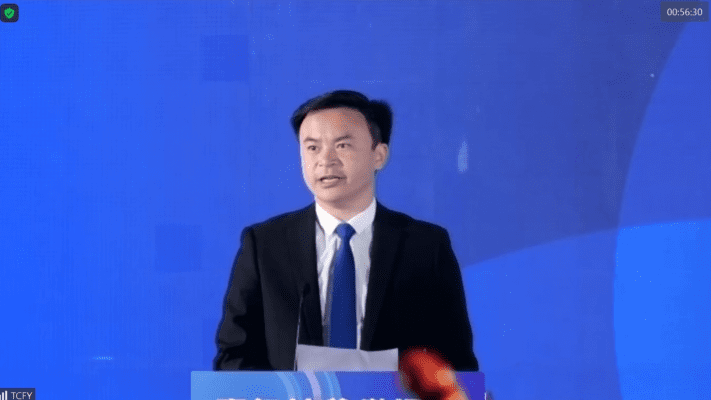
Mr. Liao Changyou further explained that winning the fight against poverty is mainly an effort of four major aspects: (1) Strengthening the work-force and youth capacity building in the grassroots level of all rural areas. More than 14,000 villages were equipped with specialized young officers; more than 3,900 “Western-area Program” volunteers were selected to carry out poverty alleviation services in 54 impoverished areas in Guangxi; more than 13,000 college students went to the front line of rural areas. (2) Academic program was carried out to support the poverty alleviation program. There were approximately 11,000 rural students were funded based on the official record; 177 postgraduates were formed as teaching team that was to carry out educational building in rural schools. (3) Provided employment assistance to help fight poverty. That was the advancement initiative to help young people in their employment and increase their family income. (4) Entrepreneurship assistance to help alleviate poverty was properly been deviced. There were accumulatively more than 6000 young people in 33 rural areas were assisted in their entrepreneurship and self-supporting livelihood. Finally, he concluded that under the new situation of normalizing, prevention and control of the covid-19 pandemic, hopefully the youth from both of China and ASEAN can work together and to learn from each other in their own good experiences and practices respectfully, leading to jointly fight against the pandemic, and jointly promote poverty alleviation and rural revitalization, thus, positively building the destiny of mankind and youth is playing their role in the contribution towards building a community with a shared future.
Pan Yingting, Deputy Director of International Department, All-China Youth Federation had shared her experience too in the ceremony. Ms. Pan Yingting (pic above), is the head of video production of the micro-class, was invited to share her experience from the countryside to the entire process of video production concepts (above 1&2). Pan Yingting shared the documentation “Climb over this mountain to reach”, the protagonist is Yang Haiqiang, a grassroots officer born in the 90s. He himself also shared more of his experiences in his speech on the spot. He said that in China, just like any other ASEAN countries, there used to be many beautiful and poor small areas covered by mountain and villages; in China, there is a saying, “To get rich, the first thing is to build roads.” Thus, China’s infrastructure construction has enabled thousands of mountain and cities to be connected. Pan Yingting also mentioned the second role inside her documentation, which is Ms. Hu Yujie, a rural girl. She has witnessed the changes in the village brought about by national policies and poverty alleviation in recent years. Pan Yingting emphasized that, just like what the first video has mentioned at the beginning: It is a wish to get rid of poverty. It is a dream to lift 10 million people out of poverty every year. There are countless Chinese poverty alleviation cadres with ideals and feelings making these dreams come true.
PARTICIPATION OF ASEAN YOUTH LEADERS
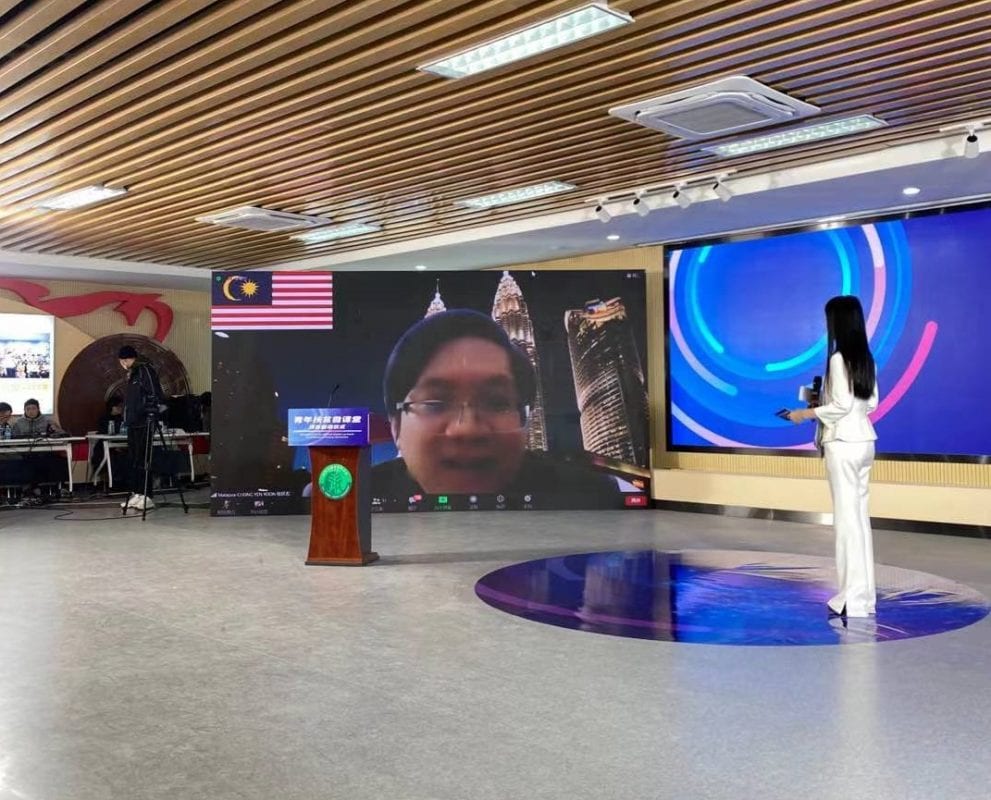
Dr. Chong Yen Yoon, a representative from Malaysia delivering his speech of how ICTs helping in the context of poor alleviation.
Dr. Chong Yen Yoon delivered his 8-mins speech in his presentation entitled “Advancing ICTs for Poverty Eradication”. He defined the ‘Online Platform’ as a range of services available on the Internet, including marketplaces, search engines, social media, creative content outlets, app stores, communications services, payment systems, services comprising the so-called “collaborative” or “gig” economy, and much more. He quoted that Alibaba is an example of the open platform, which provides external partners with all kinds of raw materials, such as API, account system and data security, to serve Taobao users. The online platform businesses are comprised of core commerce, cloud computing, digital media and entertainment, and innovation initiatives. The Alibaba platform served as a business model of a digital economy, that consists of consumers, merchants, brands, retailers, third-party service providers, strategic alliance partners and other businesses.
He further explained that the ‘Informationized Management’ (our generally we called Big Data) in China is a good model in poor reduction. The online platform drives the development of whole industrial chains, creating job opportunities and providing diverse options for rural labor. Online retailing has created over 28 million jobs in rural China. provides learning opportunities, thus stimulating the entrepreneurial potential of the poor. traditional financial institutions utilize digital technologies to improve the availability of financial services for marginalized groups. In China, it supports non-cash payments for the bulk purchase of farm produce such as grains, and the issuance of pensions, medical insurance, and agricultural subsidies to the rural population.
The IT-based consultant from Malaysia also pointed there are quite a few examples of Malaysia-China digitally economy cooperation. For example, Chinese technology firm Huawei signed a Memorandum of Agreement on collaborative efforts with Malaysian communication service provider Telekom Malaysia (TM), paving the way for Malaysia’s first end-to-end cloud artificial intelligence infrastructure. Secondly, Alibaba Group’s First Overseas eWTP Hub Goes Live in Kuala Lumpur, Malaysia. It’s the first electronic-World Trade Platform established outside of China (18th June 2018), it may enhance the global competitiveness of local Malaysian SMEs with a far reaching infrastructure that encompasses e-commerce, logistics, cloud computing, mobile payment and talent training. Recently, Malaysia Airports and Alibaba Announce Operation Commencement of Cainiao Aeropolis eWTP Hub, Malaysia (November 3, 2020 ). That is considered a new e-fulfilment hub at Aeropolis aims to support Malaysia as a growing regional e-commerce logistics hub with 24-hour local delivery and 72-hour delivery worldwide.
Cyberjaya, 27 November 2020, the Malaysia Digital Economy Corporation (MDEC)* and iFLYTEK Science and Technology Co., Ltd. (002230.SZ) have entered into a Memorandum of Understanding (MoU) to jointly build an AI Innovation centre and to broaden opportunities in investment as well as facilitating cross-border cooperation between both countries for the Belt and Road Initiatives (BRI). To point another example of latest news, Malaysian brands and goods are now available on the JD Worldwide platform, under JD.com, China’s largest retailer by e-commerce value following the recent launch of the JDmas Malaysia Flagship Store on JD Worldwide.
At the end of Dr. Chong speech, he expressed the compliment to China in their success achievement in poverty allevation.
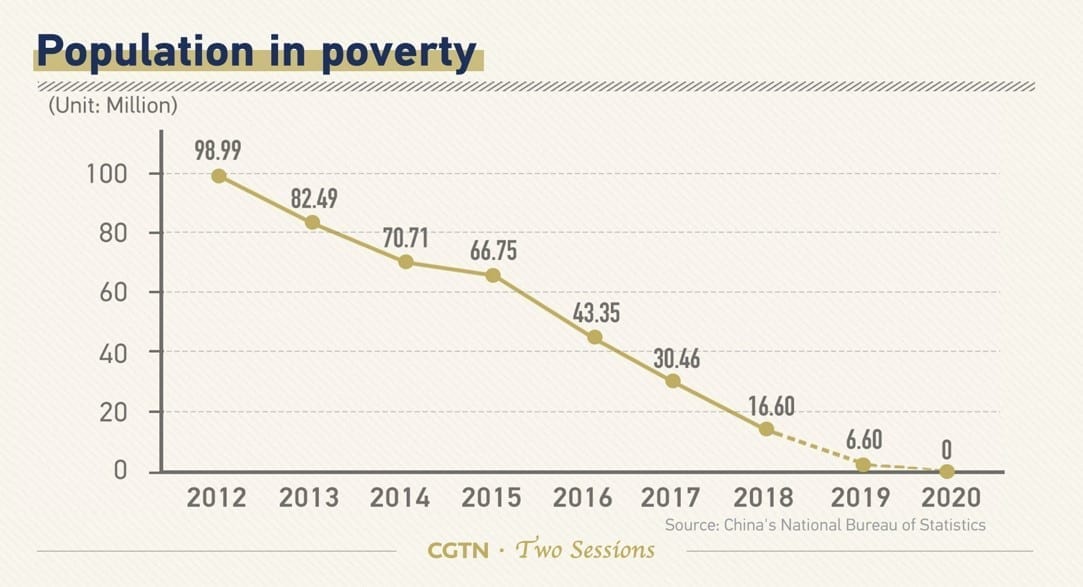
In the case that China has shown the ability in poverty reduction, there is a hope for the ASEAN countries to fight against poverty too.
Five representatives from Malaysia are Mr. Astar Kumaroov Bin Mohammad ; Mr. Tang Chin Wee; Ms. Ng Yuet Yeng (Zoel); Dr. Chong Yen Yoon and Mr. Rizal Asyraaf.
TODAY NEWS: China-ASEAN Youth Poor Alleviation Sharing – The Success Stories Behind
News @ Youtube
News @ Youku
There was also a full coverage being reported from Myanmar side, as Mr. Liu Zhengqi, a representative of Myanmar Youth Leaders and Chairman of the Kokang Youth Federation, participated in the event. At the same time, representatives of the HPA project team in Kokang also participated in the meeting.
Sources: 新浪新闻客户端 (Sina News) 广西日报 (Guangxi News) 南国早报 (South China Morning Post) and 缅甸福利来集团 (Fully Light Group Website)

